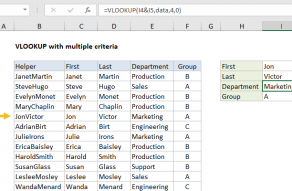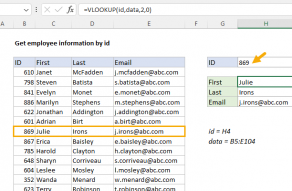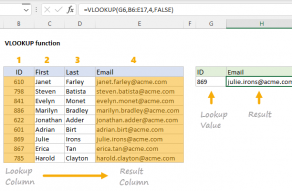Explanation
Working from the inside out, the IF function in this formula, which is entered as the "table_array" argument in VLOOKUP, runs a logical test on the value in column C "Years", which represents the number of years a salesperson has been with a company. If C5 is less than 2, then table1 is returned as the value if true. If C4 is greater than 2, table2 is returned as the value if false.
In other words, if years is less than 2, table1 is used as for table_array, and, if not, table2 is used as for table_array.
Alternate syntax
If the lookup tables require different processing rules, then you can wrap two VLOOKUP functions inside of an IF function like so:
=IF(test,VLOOKUP (value,table1,col,match),VLOOKUP (value,table2,col,match))
This allows you to customize the inputs to each VLOOKUP as needed.
Related formulas
Multiple chained VLOOKUPs
VLOOKUP with numbers and text
VLOOKUP with multiple criteria
Merge tables with VLOOKUP
VLOOKUP without #N/A error
VLOOKUP two-way lookup
VLOOKUP calculate grades
Get employee information with VLOOKUP
Merge tables with VLOOKUP
VLOOKUP without #N/A error
Related functions
VLOOKUP Function
The Excel VLOOKUP function is used to retrieve information from a table using a lookup value. The lookup values must appear in the first column of the table, and the information to retrieve is specified by column number. VLOOKUP supports approximate and exact...




















